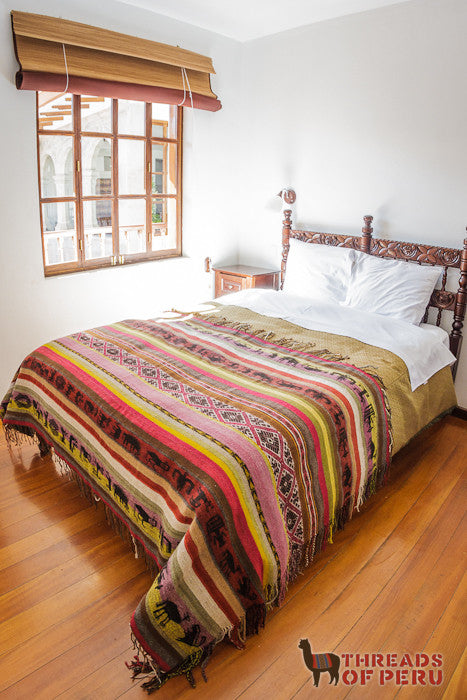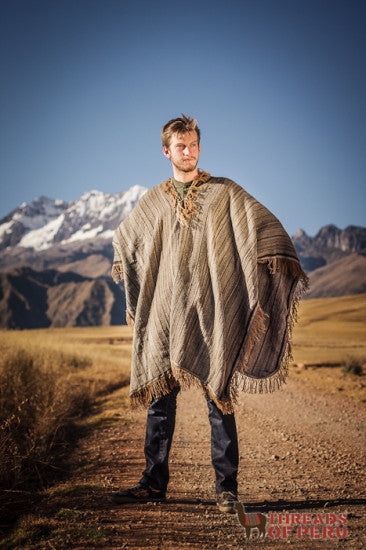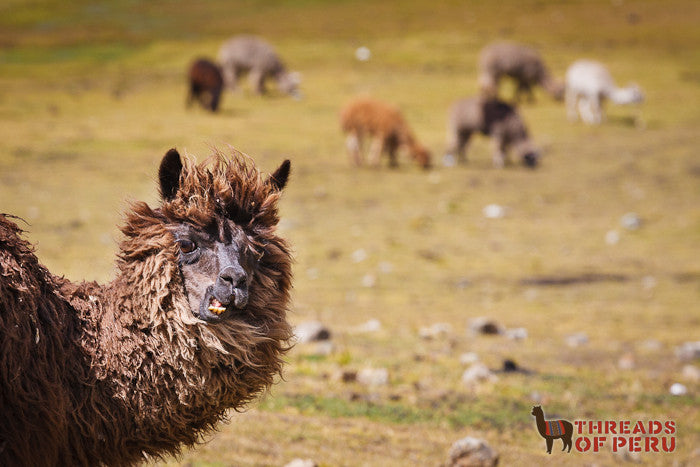Last week we talked about the new ponchos in our store, this week we are going to talk about something a little less traditional but equally as beautiful — bedspreads!

If you are looking for a way to bring some rustic beauty into your bedroom, these bedspreads (or cubrecamas) won’t disappoint. Made from the rich natural fibers of the Andes, they represent the vibrant weaving tradition that thrives here.
Each of the bedspreads is handcrafted and is endowed with the personal artistic touch of its weaver. Take the bedspread pictured above. It is from the community of Chaullacocha and contains a wealth of symbols representing life there.
On this blanket alone you will find llamas, alpacas, condors, deer, sheep, and many more native animals. Many of these animals, the llamas, alpacas, and sheep especially, are an important part of everyday life in the communities. They represent food, clothing, and a source of income for many people in rural areas of Peru.
Some of the animals have a religious significance, like the condor who rules the air (Hanaq Pacha) along with the puma and serpent who rule the earth and underworld. This blanket even has a depiction of a ship, evidence of the weavers’ evolving influences.
The connection to the storied Andean weaving tradition doesn’t stop with the designs. The dyes used to create the earthy palette come from natural sources and are infused into the fibers using traditional methods. Our bedspreads are woven together using methods practiced in the Andes for hundreds of years. The looms the women use, the tools they craft their weavings with, and the techniques they practice are all rooted in a deep history.
Adding this bedspread to your home will bring a piece of that history to you and help support the preservation of this tradition. The only problem you are going to have is deciding if you should embrace the warm blanket as a bedspread or hang it on your wall as art!









